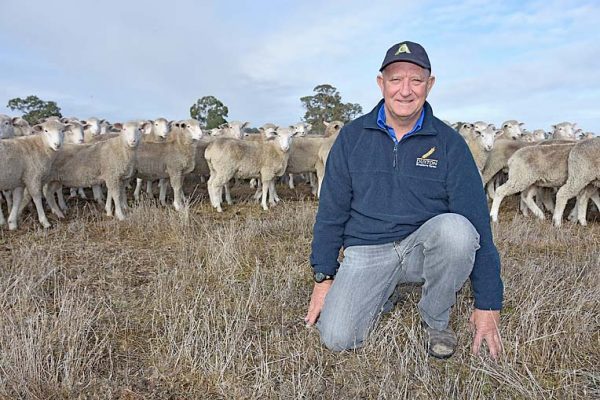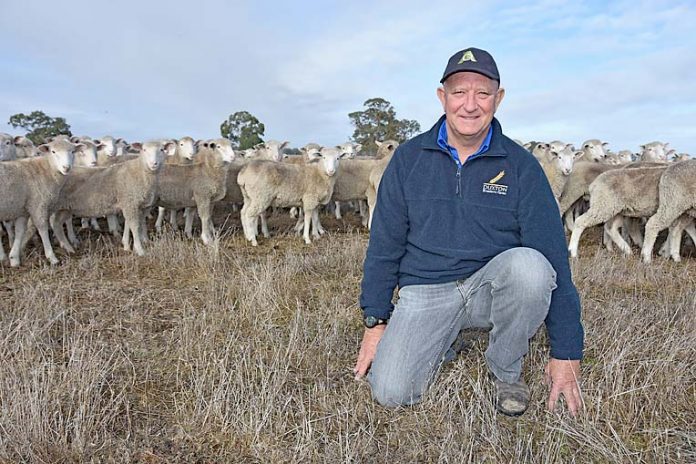
A NARACOORTE sheep producer says copper deficient pastures could be silently robbing woolgrowers and lamb producers of valuable yield.
Martin Flower – who managed the ASX listed Duxton Farms Naracoorte operation near the South Australian-Victorian border – has urged producers to be more vigilant around the signs exhibited by sheep deficient in copper from pasture-fed diets.
“It’s not always clearly visible in your flocks – for us it became apparent in the feedback we were receiving from our abattoirs,” Mr Flower said.
“That’s what caused us to investigate further to have the problem addressed.”
After receiving feedback about consigned lambs in the post-slaughter stage had been exhibiting brittle ribs, Mr Flower and technical agronomist James Stewart isolated the cause as copper deficient soils.
Mr Stewart said the first steps in the investigation involved identifying paddocks where ewes were joined the previous year and soil and tissue testing paddocks with an absence of any recent soil test history.
“This process definitely confirmed the paddocks with the problem and we also advised Martin to get a liver biopsy done on an older ewe,” he said.
“Everything confirmed there was a problem, so copper was added to the pasture fertiliser the following year.”
Mr Flower divided the farm into thirds and applied a capital rate of copper at 1kg per hectare onto each third annually to achieve efficiency gains and maximise value from the added cost of the copper.
“We did not notice any other outward signs of poor health in our sheep while they were on the ground,” Mr Flower said.
“It was only the feedback about the cracked ribs that got us investigating copper deficiency problem.
“Since we have addressed the copper issues on our grazing country the cracked ribs have decreased from 25pc to 10pc in the first five years and now down to about 3pc of our lambs in the last year.”
Mr Flower’s carefully managed pasture program supports a flock of 5000 F1 Merino-Border Leicester breeding ewes, with female progeny mated to Poll Dorset rams.
He said pastures comprised of phalaris and ryegrass with a sub clover base and could last up to 15 years depending on the persistence of perennial grass species.
“When paddocks start thinning out of perennial grasses, they normally go back into a cropping rotation phase,” Mr Flower said.
“When the cropping paddocks start getting too dirty with grasses, they go back into a pasture phase.”
Mr Flowers said fertiliser rates for pastures were calculated on dry sheep equivalent per hectare and work on .8 units of phosphorus per measurement.
He said levels were maintained at a range of 40-50 Colwell Phosphorus.
“If phosphorus levels drop below this range, we would normally up our dry sheep equivalent rate of phosphorus to 1.3-1.6, depending on the budget,” Mr Flower said.








